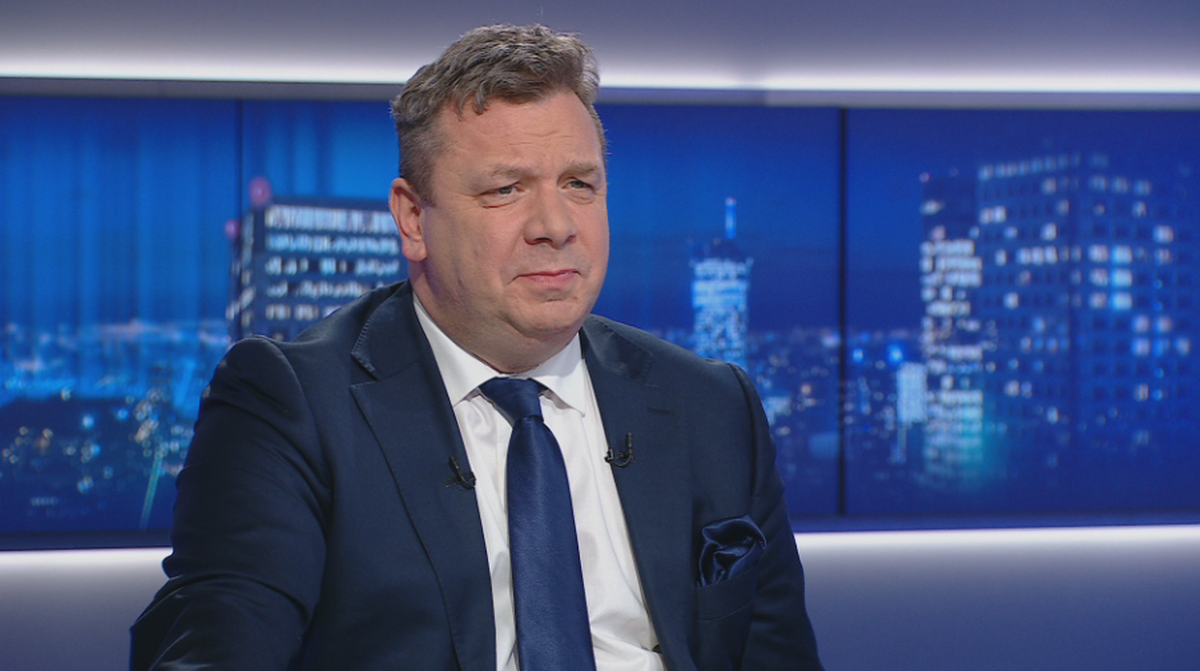The conflict in Ukraine opened a completely fresh era. It became a war of drones, and indirectly besides a catalyst for a revolution that in the world's armies had already budged. Now countries are rapidly trying not only to make unmanned systems but besides to integrate them into already functioning military structures.
Unmanned Camcopter S-100 aircraft departing from the patrol vessel of the Finnish border defender “Turva” in the Gulf of Finland waters Fig. Schiebel
Example one. Gdynia, the war port. At the waterfront stands a moored ORP “Albatros”, 1 of the mine destroyers of task 258. – The ship was designed to search, identify and destruct sea mines. Thanks to its equipment, it can besides effectively safe critical infrastructure. We are able to monitor all its elements – both on the water and below its surface – is calculated by kmdr ppor. Michael Bober, unit commander. Not only are the sonar ships helping, but besides autonomous submarines. For example, Hugin can scan up to 9 square miles of seabed on a 24-hour mission. And thanks to the underwater drones, the 258 ships are so useful during Operation Bay, led by the Centre for Marine Operations – Command of the Marine Component. It consists of protecting key lines of transportation of natural materials and energy from Poland hybrid attacks, which in fresh years in the Baltic Sea were not missing.
Example two. Podlasie, border between Poland and Belarus. On the west side, another change of troops patrolling the area along a dam set 2 years ago, on the east side, a group of possible migrants whose Belarusian services lured them to the border and now they are trying to push against the law to the European Union. This is not the end – it cannot be excluded that the same way in Poland will cross Belarusian agents and divers. This is 1 of the most delicate places on the continent today. Therefore, soldiers besides monitor them from the air. At 1 time, the General Staff of the Polish Army posted on its social media profile a short movie from the sky patrol, and the recording itself caused a splash of comments. Reason? The image was most likely registered by Bayraktara – a reconnaissance drone of the air force, which is 1 of the newest acquisitions of the Polish army.
Bayraktar. photograph Damian Lubkowski/18 DZ
Example three. Inowrocław, area 56 of Air Base. In the vast spaces of the airport, operators of round-the-clock warmate ammunition practice. 1 of the tasks is to penetrate the enemy's territory, conduct reconnaissance, attack. First, a squad starts to collect the essential data. They become the basis for programming the kamikaze drone mission. The operator will fire it from a safe distance and... wait for the effect. And this one's easy to predict. – Warmate is simply a weapon of large effectiveness – admits the teacher from the Training Centre for Territorial Defence, the unit that organized the classes (because of the specificity of the soldier's work we do not disclose his data). This course took place over 2 years ago. Since then, the number of ammunition operators circulating in WOT has increased significantly. “The training continues continuously, although the exact number of soldiers who completed it cannot be given,” says the instructor.
Three examples, different types of troops, different drones, and... it's just a small part of an ever-expanded puzzle. – The drone troops are the future of the Polish army, the future of all types of armed forces. There will be hundreds of thousands of drones – flying, ground and underwater – emphasized Deputy Prime Minister and Minister of National Defence Władysław Kosiniak-Kamysz during the yearly clearance and task force briefing of the resort. The first step has already been taken. At the beginning of the year, an Inspectorate of the Unmanned Armed Systems was established in the structures of the General Command of Types of Armed Forces. Brig-Gen Mirosław Bodnar. Its aim will be to connect unmanned workers into a coherent system. Thus, staff members make plans, drone operators in linear units practice, and in the background of all this there are clear echoes of conflict in Ukraine. To a large extent, it became the catalyst for the current changes.
How do I even the odds?
For all those who follow the war in Ukraine, it is apparent that the current battlefield is completely changing due to drones. Both fighting parties no longer usage thousands, but hundreds of thousands of unmanned platforms of different types. According to Ukrainian defence minister Rustem Umerov, the Armed Forces of Ukraine acquired as many as 1.5 million of them in 2024. According to a February 2025 study by the British think tank RUSI (Royal United Services Institute), drones are expected to be liable for up to 60–70% of the harm that Ukrainians did in Russian combat systems. This is the case, although, according to the authors of the report, many Ukrainian unmanned systems do not even accomplish the mark due to the specificity of a given section of the front, low operator skills, weather problems or interference of signal by enemy electronic combat systems. It is so no wonder that the conflict in Ukraine by experts has already been hailed as "a war of drones".
The air force has delashed reconnaissance and impact Reapers. photograph USAF
Why so extensive? The Ukrainians have already given answers to this question during the war – the unmanned ones let to bridge the tremendous method advantage Russia has as a world-class power in conventional means of combat. "Drones became 1 of the most crucial tools in the fight against the occupier," stated president Volodymyr Zelenski on Telegram a fewer weeks ago. "They defend the lives of our citizens and compensate for the shortage of another weapons, including artillery".
The issue seems clear not only in the context of the war in Ukraine: unmanned platforms simply work on the battlefield. The most common and preferably utilized presently unmanned – flying platforms – are much cheaper than manned machines. Just a simple comparison. 1 used, among others, by the American Army Reaper conflict drone costs about 64 million U.S. dollars, while for the F-35 plane you gotta pay about 110 million, not to mention more than 3 times more costly F-22 Raptor fighter. Few, although the failure of a crucial number of drones in purely financial terms may prove to be severe, it is little than the failure of human beings.
Machines thus become a kind of substitute for surviving force, which does not have much – as in the case of the fighting Ukraine – or which does not get active in demanding exercises and trainings, as many armies in the West experience. These difficulties may arise from the fact that in Western societies that have not experienced war for decades and which are mostly pacifist, the ethos of a soldier undergoes circumstantial erosion, meaning that professional armies may have (and In fact, they have) problems with getting those who are willing to serve. For example, British land troops face specified a problem. According to authoritative data, in fresh years more people have resigned than they have joined. There are presently around 73,000 soldiers in active service, and critics in an alarming speech state that this has been the least since Napoleonic times. However, the British Ministry of Defence maintains that this is simply a planned action, implemented in connection with the Future Soldier programme launched in 2021. It assumes that the army will be little numerous, but better armed and prepared to fight at a distance, among others thanks to the wide usage of unmanned platforms.
The weakest link
The usage of specified solutions seems to be beneficial in another respects. Drones, if decently serviced, work smoothly, can spend long hours on duty, do not tire, and their efficiency does not decrease over time. Artificial intelligence is starting to play an crucial function in specified systems. “The improvement of the AI in unmanned systems is moving towards data collection, self-analysis of information and decision-making,” says Colonel Tomasz Gergelewicz of the MON Operations Centre, and adds: “This is not only about combat missions. Artificial intelligence can be useful during patrol, reconnaissance or search and rescue activities.
The improvement and usage of AI in military drones is two-track: – On the 1 hand, it aims at the capabilities of individual systems that can be more effective than man and full autonomous to complete the task. On the another hand, it is crucial to build the ability of many systems to interact, which can complement each another – explains the Colonel.



